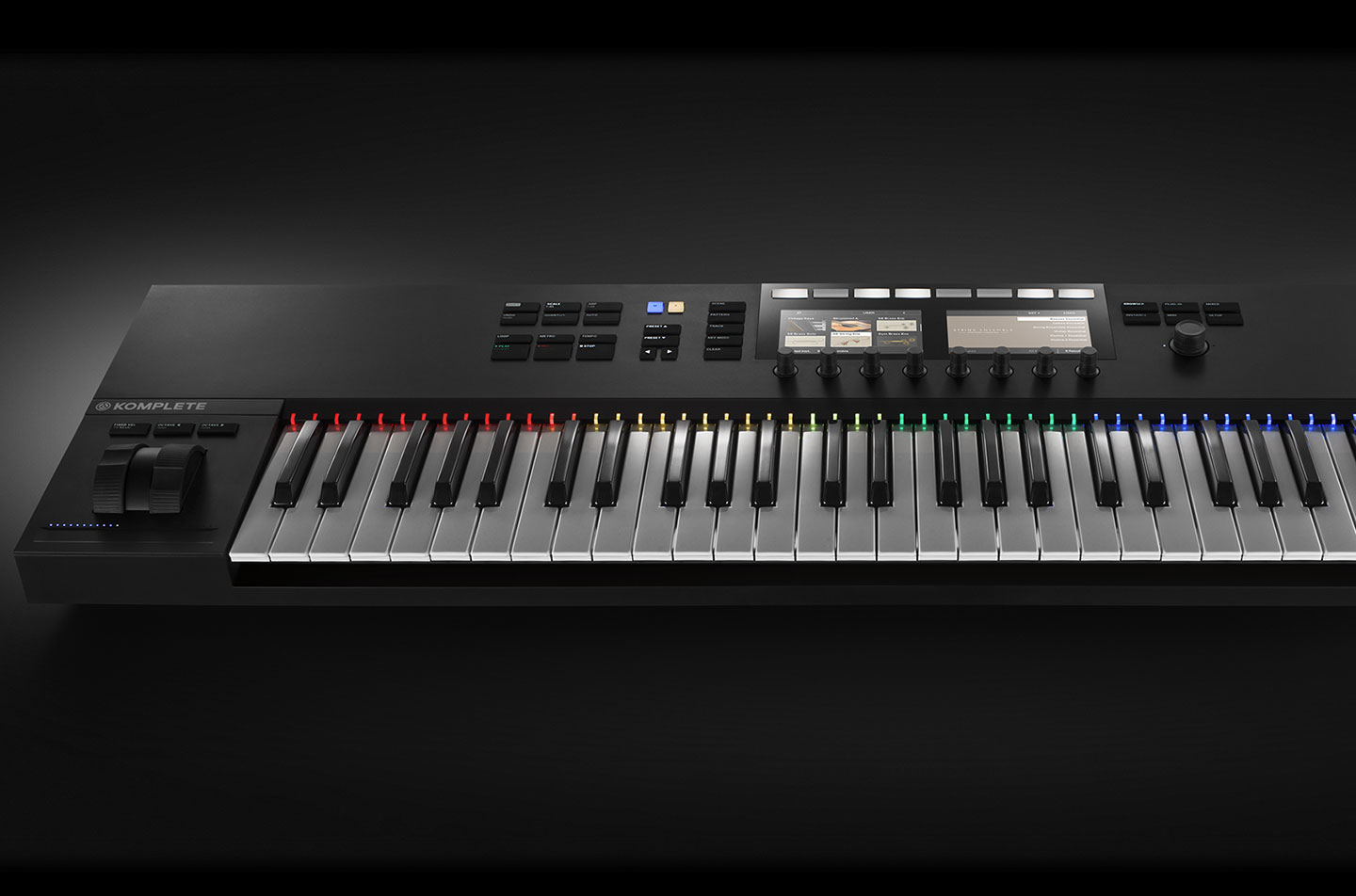- Native Instruments' Komplete Kontrol ecosystem has come a long way since we first reviewed the Kontrol S-series keyboard back in 2014. The software has seen updates that introduced support for third-party plug-ins. It was further enhanced with the release of NKS, a parameter mapping and preset organisation system that has been adopted by software developers like Soniccouture, Arturia, u-He and more. Now the hardware has been updated with last month's release of a MK2 version of the Kontrol S49 and Kontrol S61 keyboards. With the addition of high-res colour displays, more buttons and physical pitch and mod wheels, this new keyboard seems to be more of an overhaul than an upgrade.
Astute observers will note the conspicuous absence of the Kontrol S25 and Kontrol S88 keyboards in the last product announcement. There's no indication of when these sizes will be updated—Native Instruments are focused on the midrange keyboards for now. The S49 MK2 and S61 MK2 retail for the same prices ($599 and $699) as the older MK1 versions, which is a good deal when you take into account all of the new features.
The first major difference you'll notice during unboxing is that the Kontrol S MK2 models don't ship with a power adapter. They are now efficient enough to run off of USB bus power. There's still a power jack, but it's only needed If you want to use the hardware MIDI outs without the aid of a computer (you'll need to purchase an adapter separately to do that). Another obvious change is the addition of larger colour displays, similar to those that first made an appearance on the Maschine Studio controller. These high-res displays and the eight new buttons that sit above them allow you to control nearly every aspect of Komplete Kontrol right from the keyboard—from browsing presets to controlling instrument parameters—without having to glance at the computer screen.
The usefulness of these new screens isn't limited to Komplete Kontrol. The previous generation of controllers supported basic DAW integration but the MK2 builds on this significantly. Perhaps the best example is the new Mixer button, which opens an interactive mixer view in the two displays, allowing you to change the level and pan of tracks within Ableton Live, Maschine and Logic Pro X. You can also mute and solo tracks in this mode by holding down the new mute and solo buttons and pressing one of the channel buttons above the displays. The transport controls are also enhanced for most hosts. In Ableton Live, for example, you can now set tempo via tap, trigger clips, toggle recording and overdub, quantise existing clips and navigate your set using a new four-directional push encoder. These additions go a long way towards making the Kontrol S MK2 a full-featured workstation where you can make music without having to touch the keyboard and mouse. Having said that, I hope Native Instruments continues to develop this area. Some things that would be on my wishlist include the ability to duplicate and delete clips and to control Ableton macros.
Without a doubt, the host that received the most attention with the redesign is Native Instruments' own Maschine. You can now do much more within Maschine directly from the MK2 keyboards, thanks to the addition of a new column of five buttons that sit directly to the left of the displays. The first of these is the Scene button, which gives you direct access to the new Ideas view within Maschine. Next down is the Pattern button, which lets you add and remove patterns and change the length of existing patterns (you can't alter events, however). The Track button lets you navigate between groups, scenes and sounds and the Key Mode button toggles between playing all of the Maschine sounds within a group and one sound in chromatic mode. At the time of this review, these buttons are only useful if you also own Maschine, which is a bit odd. Hopefully, Native Instruments' continued host integration mode will take advantage of these for Ableton Live, Logic and the others.
The last big hardware change is the addition of rubberised pitch and mod wheels, replacing the MK1's dual touch strips. The old design was one of the more forward-thinking aspects of the original keyboards, as they allowed you to apply some creative transformations to the controller's output. You could, for example, enable Ball Mode to generate a modulation signal tracking a simulated bouncing ball with different amounts of gravity. The MK2 retained one horizontal touch strip, which sits below the pitch and mod wheels, but at the time of this review it's hardcoded to send CC 11 without any of the MK1's creative configuration possibilities. Hopefully that's coming soon, but the switch to the traditional wheel controls will no doubt please many keyboard players with their improved playability.
All of these changes make Komplete Kontrol and Maschine feel like brand new instruments. The new displays and hardware controls increase the usefulness by a great deal, especially if your keyboard isn't already located directly below your monitor. If Native Instruments continues to enhance the host integration capabilities, you could feasibly write whole tracks without ever leaving the keyboard—the holy grail of all advanced MIDI controllers. For now though, the MK2 keyboard generation is a worthwhile investment for any Komplete Kontrol user.
Ratings:
Cost: 4.0
Versatility: 4.5
Ease of use: 4.4
Build quality: 4.7
